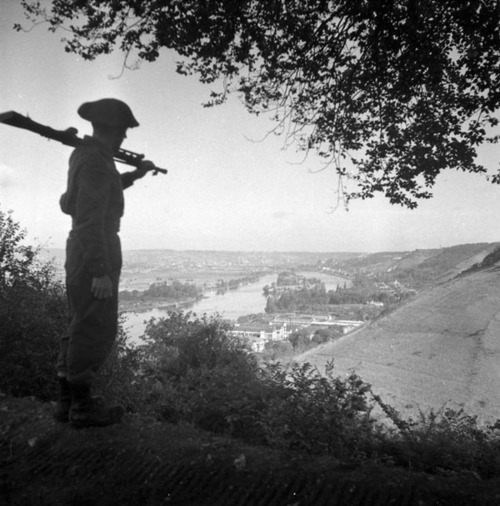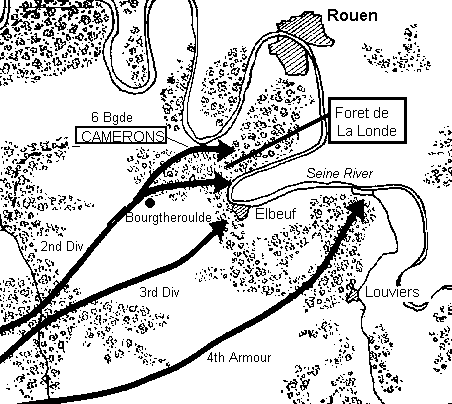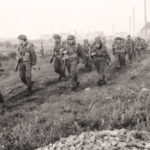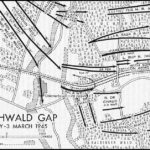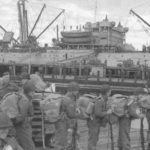The German army was now retreating in leaps and bounds. The entrapment and defeat at Falaise left no doubt in anyone’s minds that an allied victory would be secured. Some even thought victory was imminent, making plans to be home in time for Christmas.
The next German fallback point was at the Seine River near Rouen.
The 2 Divisions (Camerons) approach march, on the left of the Canadian advance, was intended to bring them to the Seine River across from Rouen. But first they would have to traverse the hilly forested area known as the “Foret de La Londe”. This was described as a non-tactical move, and that no, or very few, enemy would be encountered. The ensuing battle was one of the most difficult and costly of the campaign.
Most of the forces came into the forest on the south side. The South Saskatchewan Regiment entered the forest on the Northwest side followed by the Camerons. In the south the approach was bogged down by fierce enemy resistance. On the north the SSR occupied high ground south of La Bouille while the Camerons moved to their left flank closer to the river. The Camerons encountered mortar and enemy machine gun fire as they approached a railway tunnel. By nightfall on the 27th the two battalions were dug in and awaiting further orders.
On midnight of the 27th the generals met and decided that since 3 Division was across the Seine they required 2 Division to push on towards Rouen as soon as possible. The attack would be mounted from the south in the morning and it was hoped that they would meet up with the 6 brigade elements (Camerons and SSR) along the way.
The attack was destined to fail. The Royal Regiment was first to be ordered to cross an open area and attack a command post atop a hill faced by “chalk pits”. A planned artillery attack was called off because no one knew the exact whereabouts of the SSR and the Camerons. A total of 3 regiments were decimated by this attack before it was withdrawn.
Meanwhile, north of the “Chalk Pits” were the Camerons and the SSR pinned down by mortar and artillery barrage most of the day of the 28th. There was much confusion in the three days the 2 Div regiments were in the Foret de la Londe. On the night of the 28th a hasty orders group was called by the Camerons and platoon leaders huddled around a map of the forest – the only copy of the map anyone owned! The Camerons were under continuous mortar fire and artillery fire most of the night as they moved behind the SSR. When everything stopped they dug in for the night.
The next morning, (the 29th) the withdrawal of the SSRs caused some of the men to panic and a disorderly retreat was the result. What was left of the two regiments, 100 Camerons and 50 SSRs, were grouped in and around a quarry. Order was restored and the CO of the SSR moved his men back to their previous positions with the aid of some tanks which were brought up to the scene. The Germans were quick to withdraw and the battle was over.
Henri was killed sometime on the 28th. Henri was shot in the chest by a sniper on a mission which he had volunteered for. The letter received from Henri’s commandant after his death said that Henri was the type of soldier who was always one to volunteer.
Henri’s tenacity was shown in his last words to his comrades. It was reported to be “Leave me here and go get those Germans” – or words to that effect. To the end his mission was clear, to fight the German Army who had started this great war, a huge atrocity against both his country and family.
During the battle of the Foret de la Londe the 2nd Canadian Infantry Division suffered 577 causalities. There has been questions regarding why they were ordered to take this position and not just go around, since all other Canadian units had already been across the Seine River for three days.
Henri is buried at the Canadian Military Cemetery at Bretteville-Sur-Laize. Near the very place he first joined the Camerons. When news of Henri’s death came home, his father took down the map with which he had been charting the allies progress, and threw it in the woodstove.
